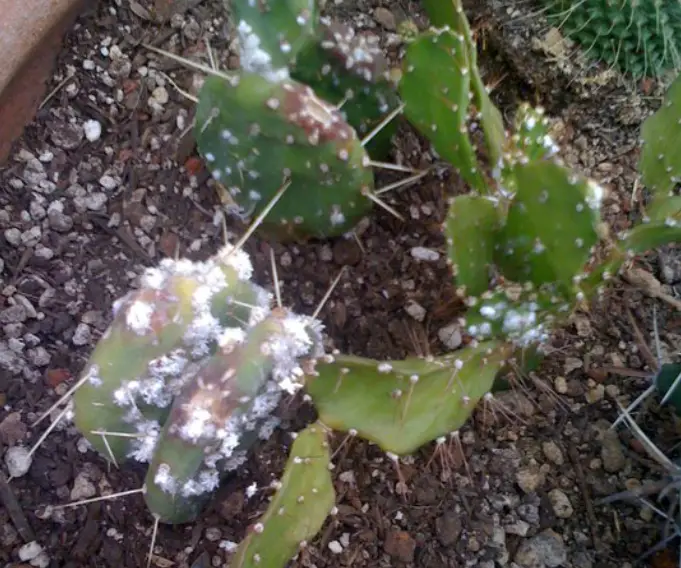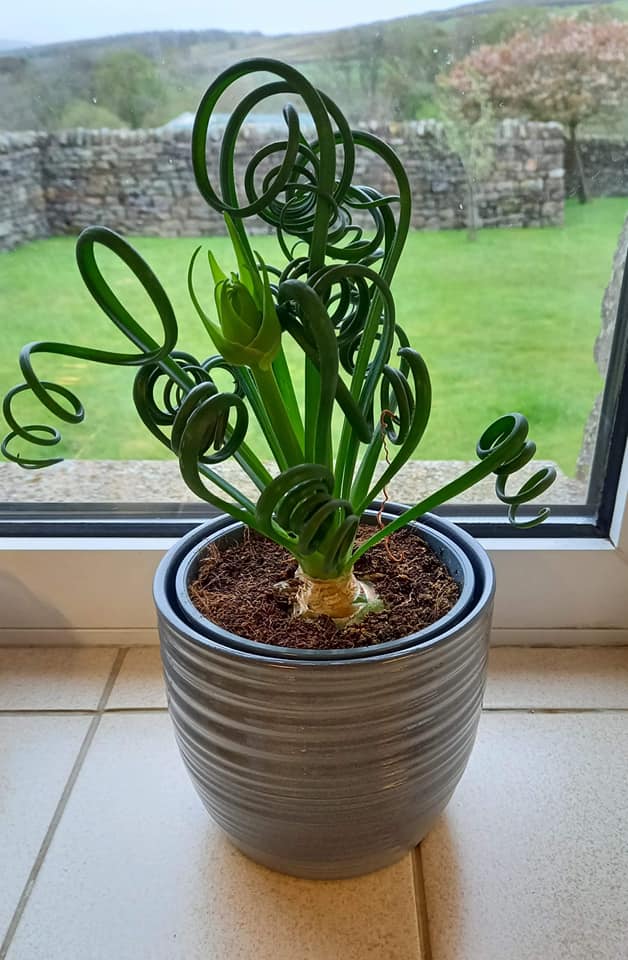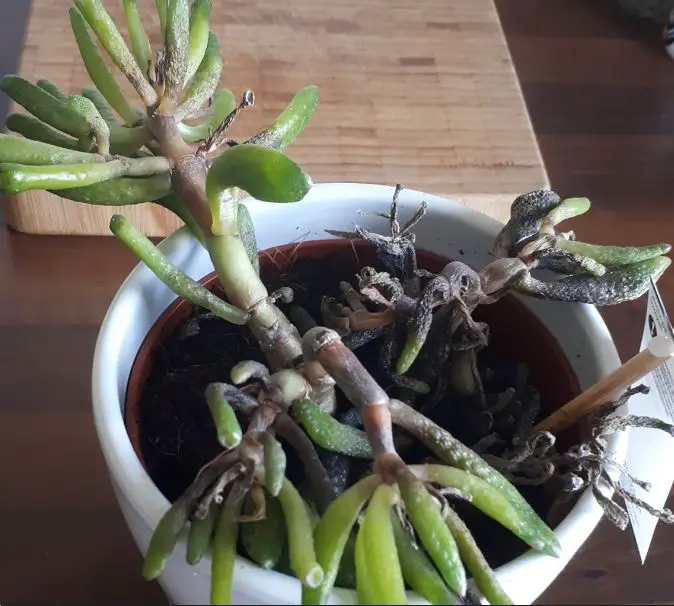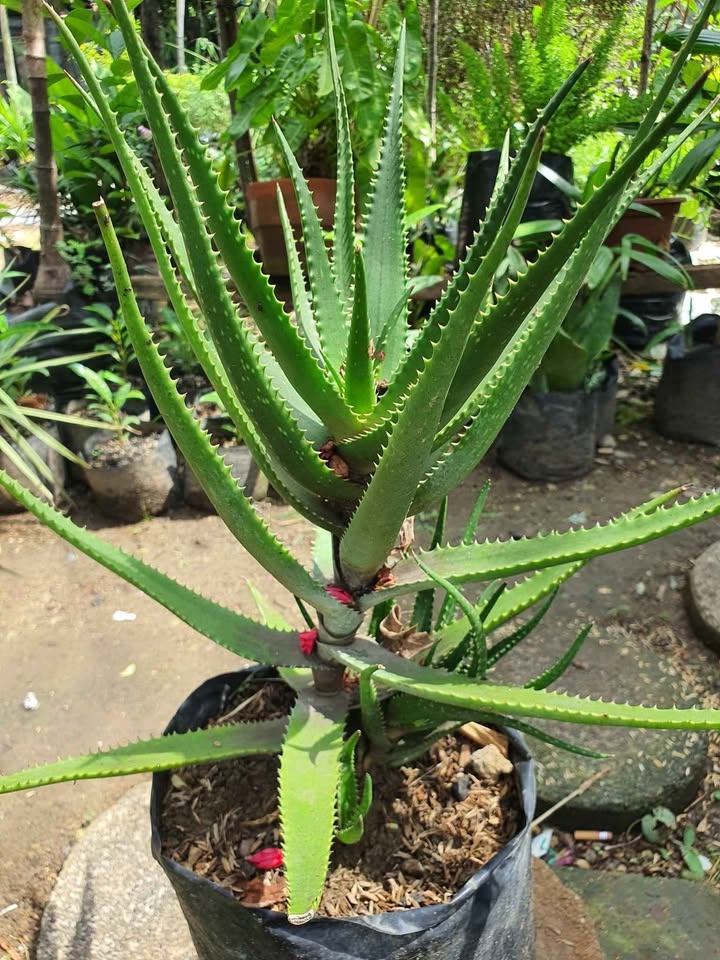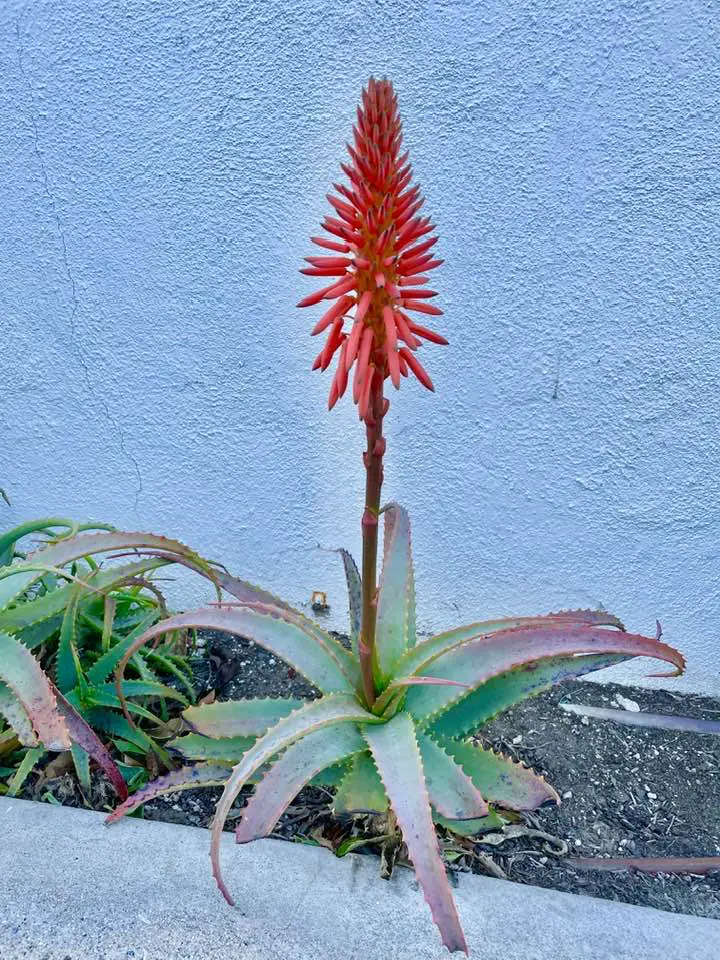What’s the White Fuzz on Succulents? What to Do
Succulents are the easiest plants to care for, but a white fuzz on their stems or leaves isn’t something to ignore. A thorough inspection should be done to identify and solve the mystery of the white stuff forming on your succulent.
White fuzz on the succulents might be pests such as mealybugs or woolly aphids, which are known for creating a white, cotton-like substance. It could also be powdery mildew or a mineral deposit on the plant.
To fix this problem, isolate the plant, inspect it thoroughly, and apply the appropriate treatment.
White fuzz on succulents causes
Here are possible reasons why there is white stuff on your cactus and how to fix the problem.
1. Mealybugs
Mealybugs are small insects covered in white cottony material. Their source is unknown but common in overwatered and over-fertilized plants. You’ll notice mealybugs by the white fuzz they form on succulent leaves which are actually their breeding nests.
Although they feed on various plants, they like soft and succulent plants like cactuses, where they suck sap. This causes small bad-looking wounds that expose the plant to bacterial and fungal infections.
Mealybugs tend to concentrate more on the growing tips of a plant or where stems meet. Some varieties dwell in the soil and feed on root hairs, resulting in foliar yellowing, plant wilting, declining growth, and bloom problems. These underground infestations are usually difficult to detect.
How to treat
Mealybugs are known to spread very fast, making it difficult to control them in large colonies. They wedge in tight areas, and reaching them can be difficult. When getting rid of mealybugs on the cactus, be sure to inspect all nearby plants.
Washing the plant with a strong strand of water can help control mealybugs. Alternatively, wipe the insects with a cotton swab dipped in isopropyl alcohol. One-time washing hardly eliminates all the pests; you’ll need to do it periodically until all the mealybugs are gone.
It may also be helpful to prune or destroy heavily infested plants. Then carefully seal the materials in a plastic bag and dispose of them away from other plants. Mealybugs can survive on detached plant parts if they contain moisture.
Chemical pesticides can also be used to control mealybugs, but they may not be healthy for your plants. Less toxic alternatives such as neem oil or insecticidal soap may also give good results. Explains Susan Mahr, University of Wisconsin – Madison.
Several predators are known to reduce the population of mealybugs naturally, but they may not be appropriate to use in a typical home setup. The mealybug destroyer is a small beetle known to feed on these undesired insects greedily.
2. Powdery mildew
Powdery mildew is a fungal infection that affects various plants. It emerges with persistent wet conditions around the plant. Poor lighting and improper airflow around the plant are also potential causes of this problem.
The white fungus isn’t a threat to many plants but can distort newly growing shoots, slow down growth, and discolor the leaves. In rare but extreme situations, heavy infections cause plant death, explains Dr. Sharon M. Douglas of The Connecticut Agricultural Experiment Station.
Early detection of powdery mildew may not be easy unless the plant is periodically monitored. Symptoms often appear on the leaves but can also be noticed on stems, flowers, and buds. Over time, some infected leaves may shrivel, brown, and drop prematurely.
Effective control
Treatment of powdery mildew range from natural to chemical approaches. Proper watering, pruning, and enhanced air circulation around the plant can help prevent this problem. Treatment with neem oil, insecticidal soap, or a recommended fungicide can effectively manage powdery mildew on succulents.
Removal of the severely affected plants or parts can prevent the spread of powdery mildew. The material should be tightly enclosed in a plastic bag for disposal. The most important thing is to scout for the infection regularly and contain outbreaks early enough before they become widespread.
3. Mineral buildup
It’s common for salts to accumulate on potted plants, particularly on leaves and soil. The white fuzz on succulents might be a layer of soluble salts commonly found in hard water and fertilizers. If left untreated, this buildup can damage the soil and plants.
High levels of salt buildup will draw moisture from plants through osmosis. In most houseplants, the salt buildup may cause stunt growth, brown leaf tips, dead root tips, leaf dropping, and wilting. The nature of damage may vary depending on the type of salt.
How to fix
To remove mineral buildup on plant leaves, you need to wash them off with clean distilled water. Use a soft, damp cloth to wipe the residue gently. Then pour a lot of water over the plant to flush the salts from the soil.
Salt deposits on plants and soil can be prevented using water low in dissolved mineral salts. When fertilizing, read and follow the manufacturer’s instructions and remember to wash off the fertilizer on plant surfaces after the application.
When watering your plants, allow some water to drain through the holes at the bottom of the container, and then empty the saucer. Do not allow the pot to sit in water to avoid reabsorption of salts that leached out of the soil.
The University of California Master Gardener Program recommends leaching houseplants at least every 4 to 6 months. Simply pour excess water on the plant and let it drain completely. However, remove any layer of salt buildup on the soil before leaching.
If you suspect an excess buildup of salts, then repot the plant in a fresh soil mix. Use well-draining soil and a pot with drainage holes to avoid the problem of root rot.
4. Farina coating
Farina is a powdery wax coating on the stems and leaves of succulents. It is a natural secretion that protects the plant against sunburn. This epicuticle wax is waterproof and prevents excess moisture buildup on the leaves and stems.
Removing farina coating might expose the plant to dangers like scorching, stem rot, and pests.
Most gardeners may confuse farina with powdery mildew. To tell the difference, look at the uniformity of the coating. Powdery mildew may appear patchy and does not uniformly cover the plant as farina does. Further, powdery mildew is more furry or fuzzy and doesn’t just look natural on the plant.
Final Thought
White fuzz on succulents can be mealybugs, powdery mildew, salt buildup, or a farina coating that protects the plant against elements. Monitoring your plants is important as it can help uncover many problems early enough before they harm the plants.
Tim M Dave is a gardening expert with a passion for houseplants, particularly cacti and succulents. With a degree in plant biology from the University of California, Berkeley, he has vast experience in gardening. Over the years, he has cultivated a vast collection of desert plants and learned a great deal about how to grow and care for these unique companions.
